As many as one million foreign recruits, volunteers, and conscripts fought on the side of the Germans.
Imagine the surprise of Allied forces at Normandy when they attacked the beaches on June 6th, 1944, and came across Georgians and Russians from the USSR.
How and why did a group of non-Aryans with conflicting religious ideology fight alongside the Nazis?
Background
Germany’s war machine in World War II found a number of ethnic, religious, and indigenous groups joining their ranks for a variety of reasons. Most joined not because of a belief in the 3rd Reich’s ideology but more because it was the lesser of two evils when compared to the Soviets.
Other groups joined forces with the Germans with the promise of realizing independence following the conflict. Included in this group were Estonians, Lithuanians, Latvians, and the nation of Finland, but also groups from India that opposed British authority.
In nearly all cases, these units were not necessarily supporters of the 3rd Reich but instead saw the war as a way to create a better outcome for their respective nations.
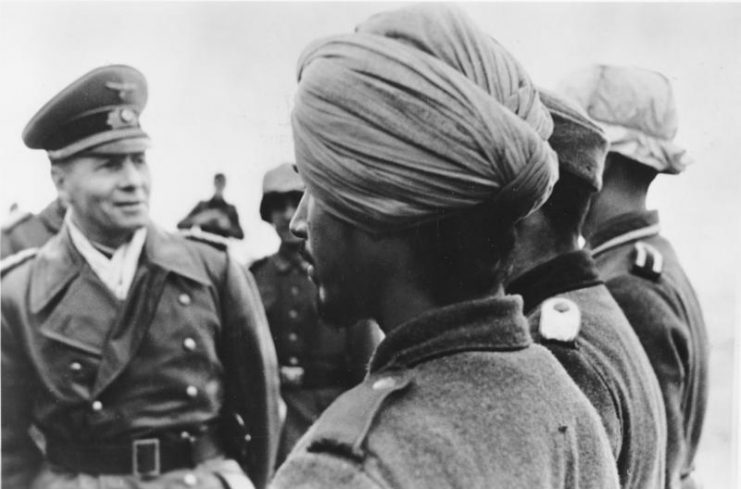
Ostlegionen
A large number of prisoners of war from Germany’s Eastern Front were either coerced or conscripted. They were assigned to units that were used in static areas in order to free up German units for larger combat roles.
Estimates vary but perhaps more than one million foreign recruits, volunteers, and conscripts fought on the side of the Germans. Most of these units were deployed on the Eastern Front or the Balkans, but by 1943 many had been moved to Italy and France.
Huge formations were created, made up of Soviet dissidents such as the corp-sized Russian Liberation Army and the Ukrainian Liberation Army. However, many units were of a smaller strength and more specific heritage.
Here are three of the unique Ostlegionen (Eastern Legions) that served in the Wehrmacht.
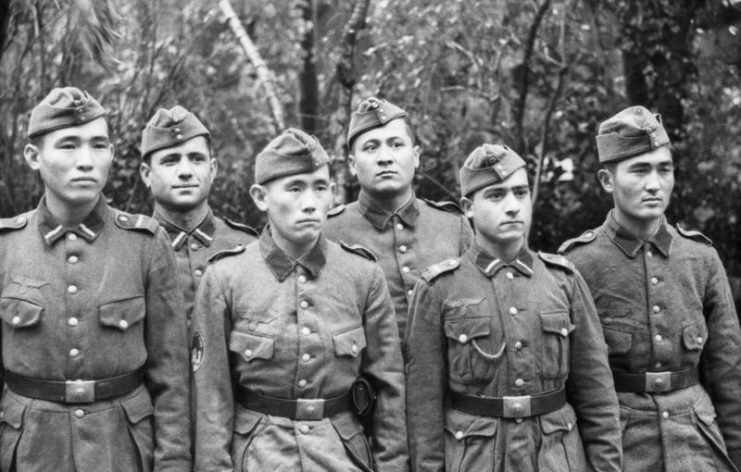
1st Cossack Cavalry Division
This unit was made up of Don Cossacks that were either already serving in the German Army, had fled from the Red Army, or were Red Army conscripts captured by the Wehrmacht who wished to fight with the Germans.
The division consisted of two brigades of cavalry and artillery. They were supported by several battalions of divisional units. The division was assigned to guard railway lines and fight against partisans in Croatia in 1943.
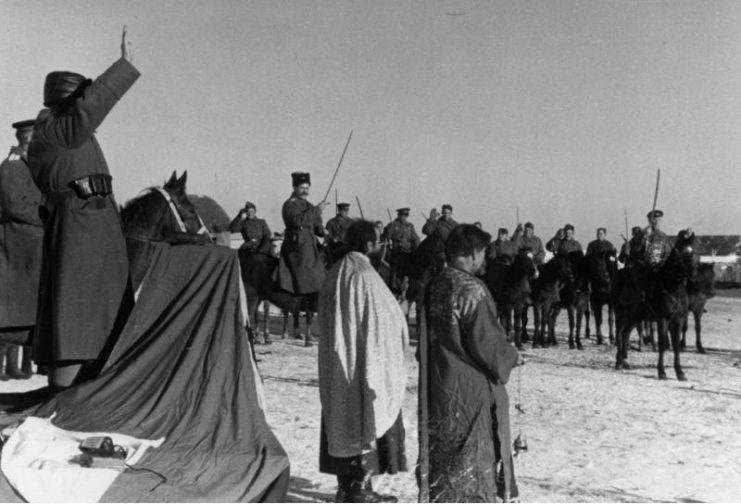
In late 1943, the 1st Cossack was assigned to participate in an offensive against partisans in Yugoslavia and capture major partisan headquarters in the town of Beocin.
The unit was effective but also ferocious. During the campaign, the unit burned a variety of villages and killed about 300 Serbian civilians. The 1st Cossack was then assigned to guarding railroads until they were sent back to Croatia.
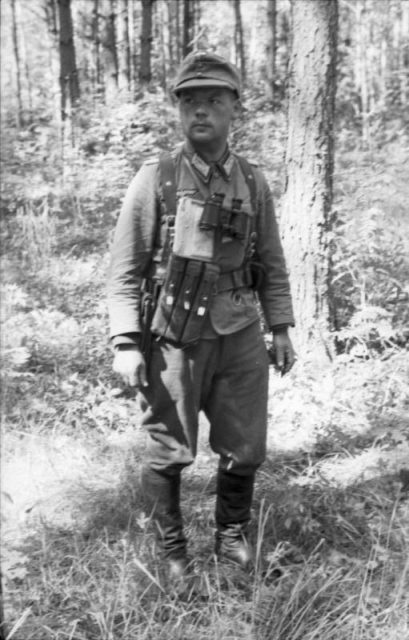
Although the formation of the unit was primarily to fight against the Soviets, the 1st Cossack didn’t engage the Red Army until December of 1944 when they defeated Red Army units near the city of Pitomaca in Croatia.
The general retreat to Austria took the 1st Cossack out of the Balkans. They participated in no other significant action until they surrendered to the British at the end of the war under the promise they would not be repatriated to the Soviet Union.
That agreement was broken, and they were forcibly transferred to the USSR where many of their officers were executed. The remaining forces were sent to gulags until after Stalin’s death in 1953.
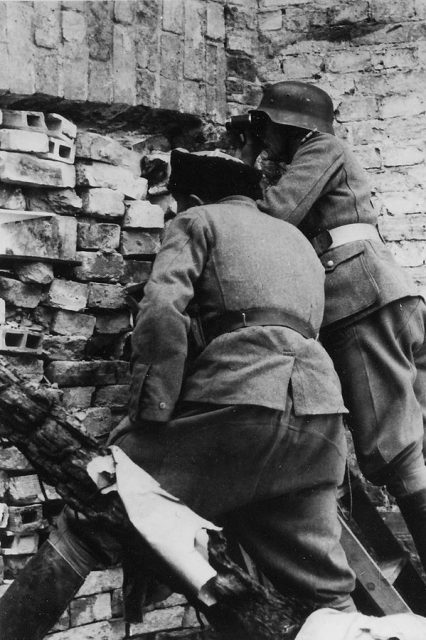
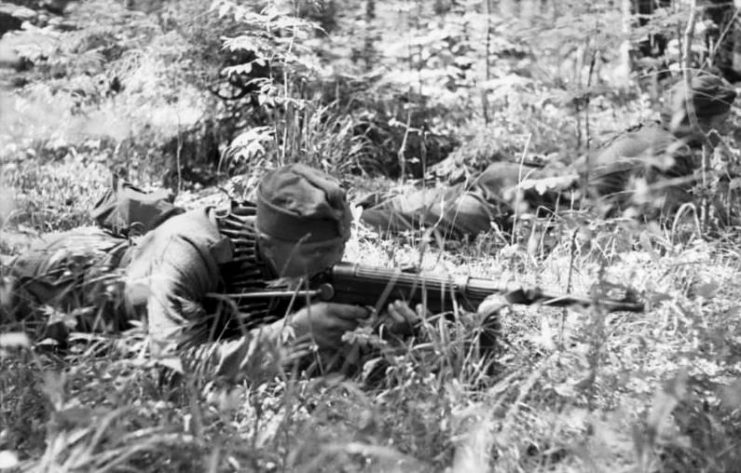
The Turkestan Legion
Most of the members of the Turkestan Legion were prisoners of war who allied themselves with the Germans in the hopes of creating a pan-Turkic state following the war.
The legion started small with only one battalion, but it had grown to around 16,000 soldiers by 1943. The legion was ultimately made up of 16 battalions and assigned to the 162nd Infantry Division of the Wehrmacht.
The 162nd Infantry Division was comprised almost exclusively of Soviet Muslims from a variety of areas including Azerbaijan, but most of the soldiers were Turkic in ethnicity.
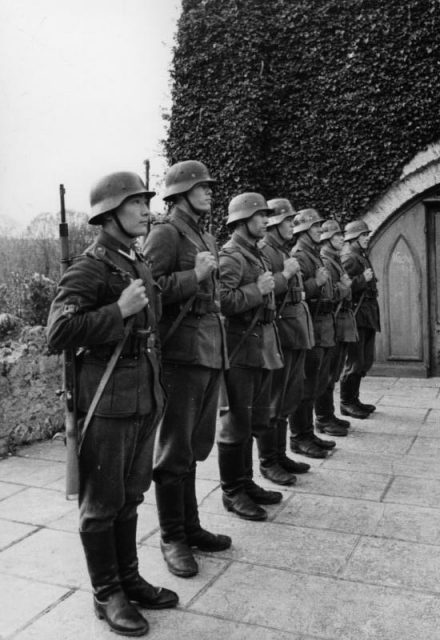
The Turkestan Legion fought throughout the next year against Yugoslav partisans before being redeployed to Italy. Their combat ineffectiveness against the Nisei soldiers of the U.S. 442nd Infantry Regiment caused the division to be pulled from the line.
After that, it was assigned to anti-partisan duties until the end of the war.
Ultimately the members of the unit were repatriated to the USSR following the war, and they were sentenced to serve in the Soviet gulags.
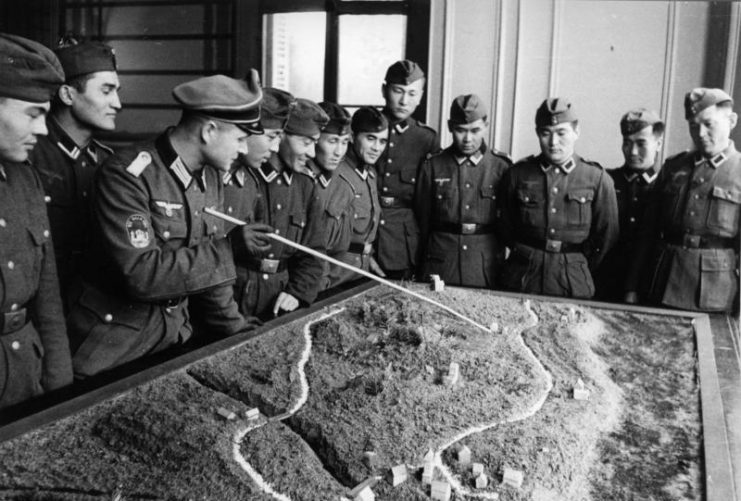
The Georgian Legions
Like most of the Eastern Legions in the German Army, the Georgian contingent was formed mostly of captured soldiers serving in the Red Army as conscripts, but many were immigrants from Europe who had fled Soviet occupation in the 1920s.
Thousands of Georgians joined the Wehrmacht, seeking to establish their own country following the war and also to avoid the deplorable conditions of the German POW camps.
The Georgians were both formed into ethnic units of their own and incorporated into other German units. At least 30,000 Georgians served in the German army during the war in the Caucasus, France, Netherlands, Poland, and in Germany itself.
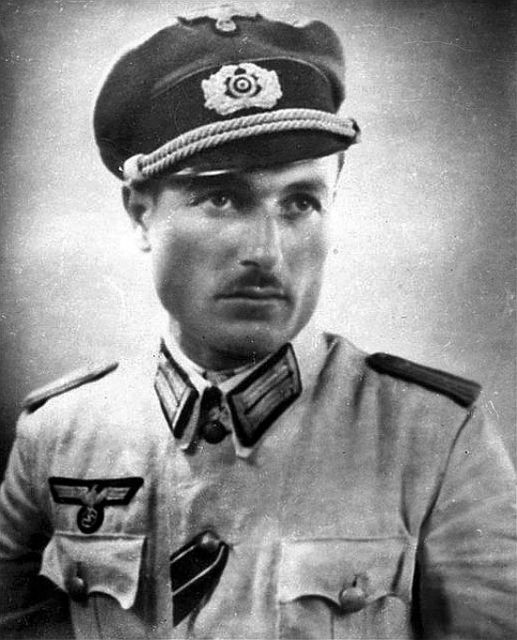
The elite Bergmann Battalion of the Brandenburgers was comprised of mostly Georgians and fought extensively in the North Caucasus, Crimea, and later in Greece.
German high command did not entirely trust the Georgians. As a result, most of their units were sent to the Western Front.
Several units of the Georgians were present in Normandy and fought against U.S. paratroopers on the Cotentin Peninsula and Cherbourg as part of the 709th and 243rd Infantry Divisions.
All these units were destroyed or captured after the fall of Cherbourg to U.S. forces on June 29, 1944.
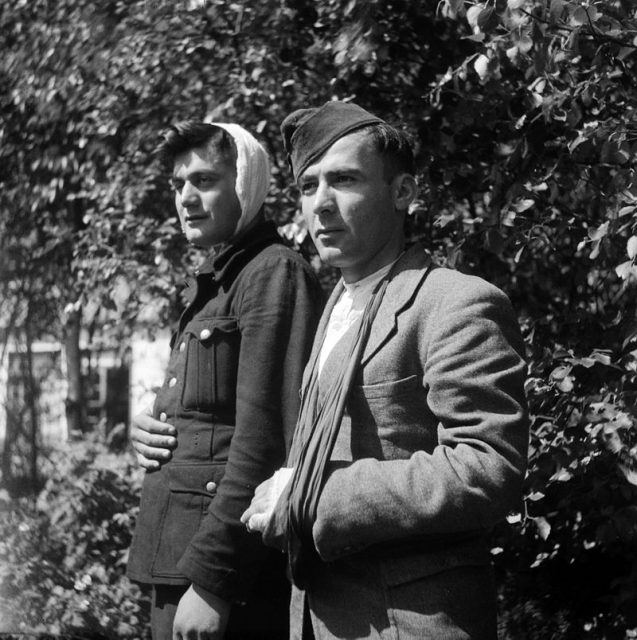
The Tamar Battalion and the Battle of Texel
One unique Georgian unit was assigned coastal duty in the Netherlands on the island of Texel. The island was highly fortified and garrisoned by the Georgian Tamar Battalion.
In April 1945, the German Army began preparations to move the Tamar battalion to the mainland to oppose the advancing Allied forces. The Georgians in the battalion opposed the relocation and began an uprising against the Germans on the night of April 5.
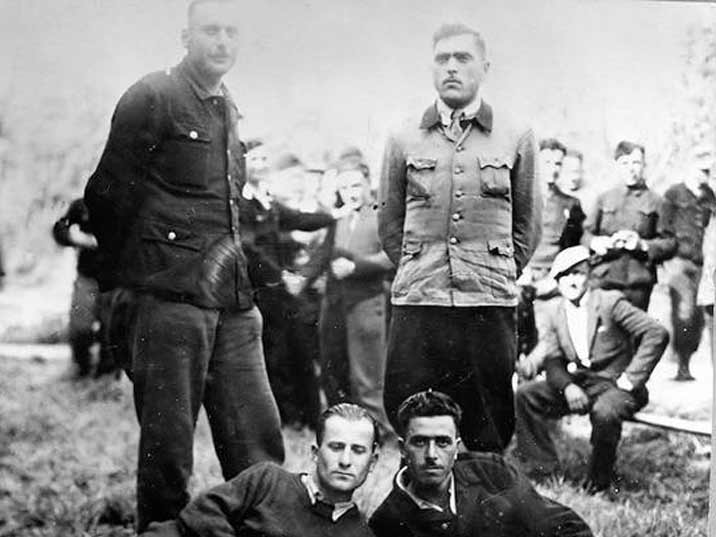
The Tamar battalion took control of the island. They killed roughly 400 German soldiers, many of whom were sleeping. The Dutch resistance assisted in the efforts, and the combined attacks left only the naval batteries on the island in German hands.
The resistance and the Georgians had anticipated the arrival of Allied forces to assist them, but these reinforcements never came.
Over the next several weeks, German forces from the mainland counterattacked with the help of those in the naval batteries. These forces shelled the areas where the Georgians were believed to be located.
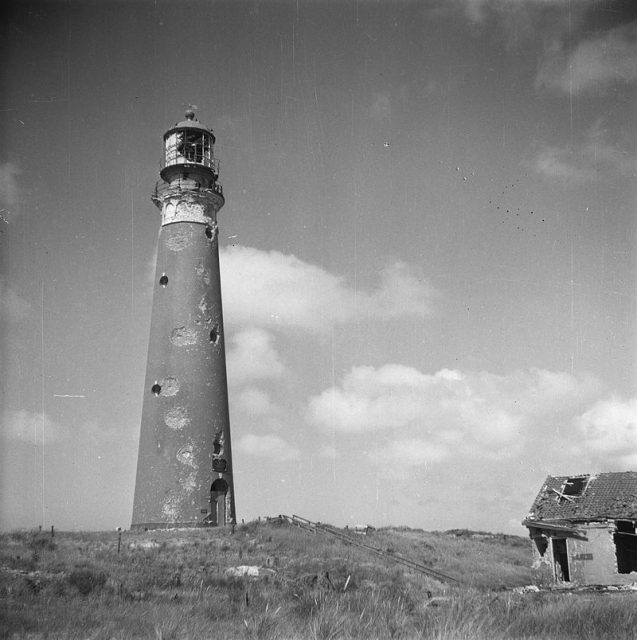
Following that, 2,000 German soldiers combed the island to find and destroy the Tamar soldiers. Much of the island was destroyed in the fighting, and many civilians were killed.
Read another story from us: Hitler’s Plans for a New World Order After His Victory in WW2
The fighting continued even after Germany’s surrender on May 8 and only finished when Canadian soldiers arrived on the island on May 20 to force the Germans to surrender.
Of the 800 soldiers in the Tamar battalion, only 228 survived the battle, and they were repatriated to the Soviet Union. They fought one of the last battles in the European Theatre of World War II.
